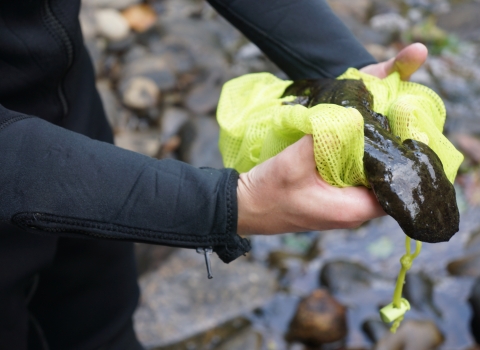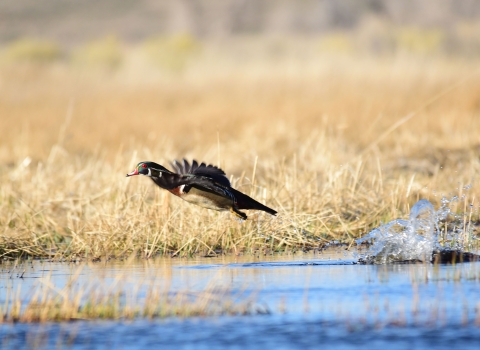The U.S. Fish and Wildlife Service (Service) and NOAA Fisheries today finalized revisions to the Candidate Conservation Agreements with Assurances (CCAAs) policy under the Endangered Species Act (ESA).
The Candidate Conservation program is emblematic of the flexibility of the ESA and how the law can be used to engage partners in conserving and protecting imperiled species before they are listed as threatened or endangered. In particular, CCAAs provide a mechanism that encourages non-federal landowners to implement specific conservation measures for at-risk wildlife. In return, they receive assurances that they will not be required to undertake any additional conservation measures or be subject to additional resource use or land use restrictions, even if subsequent information indicates that additional or revised conservation measures are needed for the species or if the species is ultimately listed under federal protection.
The policy revisions do not change landowner requirements for participation in the program, but rather clarify and simplify the process of developing and approving CCAAs. The two agencies hope these changes will encourage additional non-federal landowners to participate in these agreements.
Under the 1999 policy and regulations, in considering whether a property merits inclusion into a CCAA, the Service and NOAA Fisheries considered all the properties on which conservation measures would have to be implemented in order to preclude any need to list a species under the ESA. Although a single landowner may have proposed clearly beneficial actions, the previous standard meant that the theoretical actions of other landowners needed to be considered. This created confusion with prospective CCAA enrollees and agreement administrators. Thus, the Service and NOAA Fisheries revised the policy to remove references to the term “other necessary properties” to eliminate this confusion.
The policy also now includes the term “net conservation benefit” to clarify the standard to which landowners will be held. To include their land into a CCAA under the revision, property owners must demonstrate that their proposed actions meet this new standard in order for the species to be covered by the agreement.
The Service is concurrently publishing changes to its CCAA regulations to make them consistent with these final changes to the policy. The policy and regulation changes will align CCAAs with the net conservation benefit standard of Safe Harbor Agreements, another flexibility-driven tool in the ESA toolbox that has a similar purpose to CCAAs but for species already listed under the ESA.
These revisions build on the success of the Obama Administration in improving regulations and implementing the ESA in common sense and innovative ways. These regulatory improvements are consistent with Executive Order 13563, which calls for a retrospective analysis of existing rules to make the agency’s regulatory program more effective and less burdensome in achieving the regulatory objectives, and was included in the Department of the Interior's Final Plan for Retrospective Regulatory Review.
The Endangered Species Act is an essential tool for conserving the nation’s most at-risk wildlife, as well as the land and water on which they depend for habitat. The ESA has prevented more than 99 percent of the species listed from going extinct, serving as the critical safety net for wildlife that Congress intended when it passed the law more than 40 years ago. In addition, the ESA has helped move many species from the brink of extinction to the path to recovery, including California condors, Florida panthers and whooping cranes. The Obama Administration has delisted more species due to recovery than any prior administration, including the Oregon Chub, Virginia northern flying squirrel, brown pelican and three Channel Islands fox subspecies.
The final policy will become effective upon publication in the Federal Register on December 27, 2016.
For more information, please visit: https://www.fws.gov/program/candidate-conservation.
The Service and NOAA Fisheries are actively engaged with conservation partners and the public in the search for improved and innovative ways to conserve and recover imperiled species. To learn more, visit www.fws.gov/endangered/ or http://www.nmfs.noaa.gov/pr/.
NOAA’s mission is to understand and predict changes in the Earth's environment, from the depths of the ocean to the surface of the sun, and to conserve and manage our coastal and marine resources. Join us on Facebook, Twitter and our other social media channels at www.noaa.gov/socialmedia



